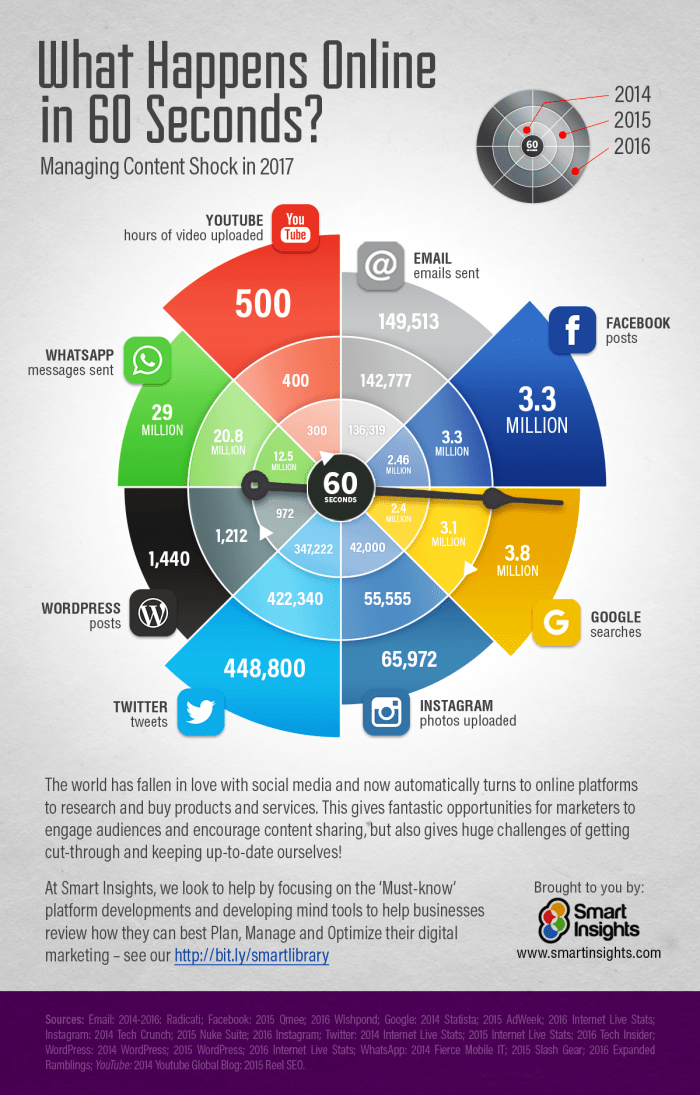If you don’t know it already, content is ruling the marketing landscape. There are 91% of B2B marketers and 86% of B2C marketers that believe content marketing is what their business needs to grow. Simply put, just about every business out there is investing heavily in creating and executing a content marketing strategy.
Content marketing is all about educating the customer before asking them to make a purchase from your business. Let’s just call it a tactic that starts a conversation with the consumer and leads them to understanding their need for your product or service.
Now you can’t possibly be walking down the streets and talking to people and creating a demand for your product. That’s where creating compelling content pieces comes in and you’ve already seen businesses publish them.
A few of the formats that we often see in the B2B and B2C domain, include:
- Blogs, articles, research papers (text)
- Tutorials, interviews, video blogs (video)
- Podcasts (audio)
- Infographics (visuals)
But as the end consumer, you’re actually being targeted with thousands of content pieces in a day.
Think about the last time you read a post on marketing automation and then never saw someone else write on the same topic.
You might have actually discovered that while one author chose to write extensively about automation, the other went on to simply create an infographic with statistics. Both the pieces saw a different response from similar target readers.
Now apply the same logic across all the industries and possibly all the topics that you can think of. That’s a whole of content that you need to compete it!
Here’s a glimpse of how much content gets pushed out on digital, in a minute:

[bctt tweet=”Content needs to generate traffic, traffic needs to turn into leads and those leads need to turn into your customers. That’s how you know your content marketing strategy is working! #contentmarketing #leadgeneration ” username=”VanhishikhaB”]
In the end, creating content is all about making it consumable for the end reader. And the reader here, has changing interests!
Just like how most of us shifted from Snapchat to Instagram, or Facebook to spending more and more time on Instagram, our readers tend to change the way they consume content.
That’s why marketers keep changing their approach towards a target market. The same holds true to all those inbound marketers who think they have nailed the content marketing strategy that will ‘always’ work for them.
Firstly, that’s not true.
If your consumer needs are changing, your strategy needs a change too.
Secondly, if you haven’t updated your content marketing strategy in the last 2 years, you’re not alone.
[bctt tweet=”There are only 56% of marketers out there who are constantly optimizing their content strategy, backed by data. #contentmarketing #inboundmarketing #bigdata ” username=”VanhishikhaB”]
How do you know your content marketing strategy is dying?
Having worked with multiple startups as a content marketer, I too have made the mistake of creating a set template for content. This includes defining the number of pieces that need to be published in a month, types of content formats that we would experiment with and the channels that we would distribute them on.
Trust me when I say this: The above approach did bring success to the startups. But after a while, we all just got used to seeing the same numbers over and over again.
When there hundreds of products being launched across industries, across the world, you really don’t want to get lost in the volume. While steady numbers are a great sign of customer loyalty, they’re also a red flag of you losing the opportunity to grow.
Here are a few signs that your content marketing strategy might need an upgrade soon.
1. Your traffic has stagnated
One of the simplest and the most obvious metrics of a content marketing strategy not working, is the traffic to your site.
You’re creating content to pull people to your website. The only way you can sell more of your product or service eventually, is when you increase the number of people you’re driving in.
Now this has two aspects that you need to look into and measure consistently:
- Returning visitors
- Unique visitors

You need to make sure that people who have previously shown interest in your content, keep coming back for more. But at the same time, you also need to ensure that newer people are also discovering your content.
You can’t possibly roll up your sleeves and head to the beach on reaching a monthly figure of 10,000! That’s when you actually have to start thinking about how many more people can you really reach.
Take Buffer for instance. That’s one company that has been publishing the most insightful pieces for years and they’re very consistent with it.
But like every other startup out there, their blog too hit a stagnation point. They had their loyal readers coming back to them for more. But somehow even their best of pieces weren’t really reaching new people.
They went back to the whiteboard to understand how their consumer needs were changing, the type of content formats they were competing with and of course, a huge content audit. While the activity took them some time and resulted in a complete overhauling of their blogging strategy, it led them to increasing their readership to over 1.5 million visits!

Pro tip: If you see even the slightest bit of a drip or a flatline anywhere in your analytics, it’s time to take action.
2. Your search traffic is next to nothing
You might disagree with me here, but content isn’t just for your end consumers today. If it doesn’t rank anywhere on the search engine, it doesn’t exist.
Now you may counter that the piece is driving in enough traffic for you on a monthly basis. But what if there is a pause in your social media activity or your advertisement resources hit a limit?
That’s why you need the search engines to work for you. This is where you need to measure how much traffic you’re pulling in organically.
If you see the number deteriorating over time or simply just existing in two figures, that’s a red flag for you. Here are the three numbers you need to measure:
- Search engine traffic – It is an indication of how well your content is indexed for the right keywords
- Direct traffic – People who are directly typing in your URL to discover more content
- Referring sites – Visitors that click a link on another site to land on yours

But to increase these numbers, you need to keep the best of SEO practices in mind and focus on adding value to the readers. Here’s the check list that I refer to all the time while creating a content marketing strategy:
- How to rank in 2018: The SEO Checklist by Rand Fishkin on Moz
Pro tip: List down the keywords you’re targeting for your business before starting to publish content. Even if it is a 300 words article, optimize it for the search engine!
3. Your content engagement isn’t promising
You might be getting social shares in hundreds when you started off and a few comments on how insightful your blog is. But now when you take stock of things, you see the number dropping to double digits and the comment section running dry.
Basically, your content is no longer driving engagement from the readers.
Here are the two things that indicate your content marketing strategy needs overhauling in this case:
- Lesser social shares
- Few to zero comments
You’ve seen how some content pieces go viral on the internet. So you need to stop using the excuse of how your content just got ignored because of a puppy video!

What can you do?
- Schedule different aspects of your content on social media to target different traffic
- Reach out to influencers for their feedback
- Create different formats to share your content (take inspiration from Gary Vaynerchuk’s Instagram account)
- Create something INTERESTING and SHAREABLE
- At the same time, please make it easier to share as well!
Here are a few resources that might come handy:
- The secret to content virality – revealed!
- 9 smart tips to turn your content from boring to viral on Contensify
Pro tip: Use social sharing buttons with counters. It will not just keep you motivated to increase the numbers, but also let your readers see how popular the piece is – might just nudge them to share it too!
4. Your content isn’t converting
Remember what I said right in the beginning?
[bctt tweet=”Publishing content just for the sake of it, is not content marketing. #contentmarketing #inboundmarketing ” username=”VanhishikhaB”]
Your content marketing strategy needs to drive in more traffic for you and that traffic eventually needs to convert into leads, and customers.
If you’ve been publishing up to 2 content pieces every week for months, and none of them have brought in customers – RED FLAG.
This means that your content pieces are not building upon each other. They are not able to guide a reader from one stage to another in your funnel.
Here are a few metrics you need to measure:
- Number of subscribers
- Number of product demos booked (if applicable)
- Number of free trials (if applicable)
The only way you can drive higher numbers for the above metrics, is to follow the content marketing funnel – your content needs to drive awareness, lead to evaluation and then to conversion.

Pro tip: If you’ve already published a lot of content, segment them into stages of the funnel for clarity on where you can use what to attract more customers. Identify what you might have missed out in the process and include those content pieces to block the funnel leaks.
Yep, just about every little metric you have been measuring (or should be) is indicative how well your content marketing strategy is working.
And no, you can’t just measure these on a monthly basis. With the competition increasing by the day, a week on week approach is what you need to follow!
Where should you begin?
Now before you go back to working and scrape off all of your existing content marketing strategy into the dust bin, hold on.
If the strategy has been bringing you consistent results over time – even if the metrics seem to have flat lined, keep it. Use this strategy as the foundation for the new one.
You know what already works for you. Now it’s just time for you to make minor tweaks in your content to drive in better results!
Take it as an A/B test you need to conduct on your content marketing strategy. You switch up a very small element in it and monitor the results it drives in. If you see a peak in your analytics, you keep the change or you move on to the next.
1. Take stock of your existing content
The very first step to content marketing strategy upgrade, is a content audit. You need to list down the content pieces you already have, the ones that have worked well for your business, the ones that were a complete failure and the numbers that each of them have been able to drive in – be it search results, social shares, comments, leads or conversions.
2. Identify what can be reused
Ever heard of evergreen content pieces?
These are content pieces that have been driving in traffic for your business, despite not being shared by you all too frequently. They’re a framework that your audience loved consuming and still go back to when looking for information.
Identify such pieces from your existing strategy and list them all down for a little repurposing.
Content repurposing refers to updating an existing content pieces with more up-to-date information. This could include statistics, quotes from influencers, changed practices and other aspects. It could also mean breaking down an ebook into infographics, blog series, podcasts or more!

3. Make a list of tactics you want to experiment with
When you’re changing your content marketing strategy, you might zealously include all the new types of content formats you find on the internet – a few infographic, gif-o-graphics, podcasts, audiobooks, webinar and what not.
But as a content marketer or a business owner, you need to list down what you can do realistically and prioritize.
As someone who has worked with small teams always, I try to include just one new experiment every month. If we’re launching a podcast this month, I would allocate 20% of my resources to creating that podcast and then 80% of them in distributing it.
By the end of the month, I would measure the results that the podcast drove in. In the next month, I’m all set to experiment with a playbook!
4. Re-allocate your resources
You could have a team of 10 writers or be relying on one for driving your content marketing strategy. In this case, you need to be careful while making changes.
It is important that you don’t lose out on what you’ve already accomplished, in the process of trying to achieve more.

Here’s the mistake I made to put things in perspective:
I am planning on starting a podcast. It requires a lot of networking and definitely moving out of my comfort zone to strategise. In the process of trying to update my own blog’s content marketing strategy, I actually messed up the consistent flow of content that I was maintaining.
If you go back to the last piece I published, you’ll probably think that I don’t use this blog anymore. But the truth is, that I’m writing on a number of other websites and as a result of that, mine got ignored. That’s what you don’t want to do!
Try to stick as close to your existing strategy to not let your readers down. If you’re publishing two content pieces a week and need to start working on a long form ebook, cut down to one – but make sure the one piece that goes out, is packed with the information that your readers expect!
5. Trust data and not your instinct!
Just because I pointed out the red flags in your content marketing strategy, does not mean you need to jump the gun and try to make changes ‘immediately’.
A successful content marketing strategy is made when you make data driven decisions. (Even though keeping up with a few fads might come handy every now and then!)
Every little change you make to your strategy, is going to take some time to show results. You’re not going to hit a million visitors overnight – unless of course, you have a million dollar social ads spend in your pocket.
So continually measure the impact that little changes in your content marketing strategy makes. That’s the only way you’ll know which new framework works for you the best!
The conclusion – Stop stagnating and ask questions always
If you want content marketing to work for your business, you just can’t decide to lay back and rely on one tactic.
You need to optimize on the go, without letting the newer trends effect your results.
To make sure you’re on the right track while optimizing your content marketing strategy, here are a few questions you should frequently ask yourself:
- Is there a defined objective?
- Is there a specific segment I am targeting?
- Is my content share worthy?
- Is my content optimized for mobile devices?
- Is there a way for my readers to share feedback?
- Is it possible for my resources to continue on this strategy?
It might look like a long process to anyone. But that’s what content marketing is all about – slow and steady to drive in maximum impact!
Content marketing is a commitment, not a campaign.
Jon Buscall





